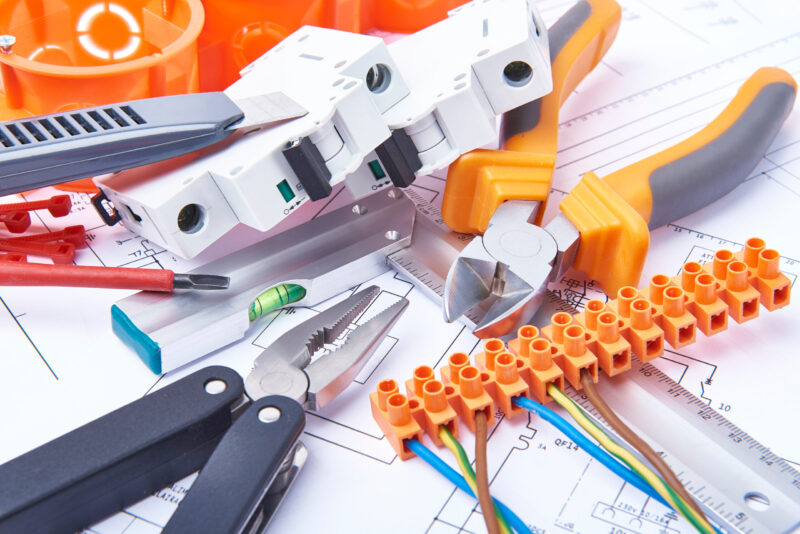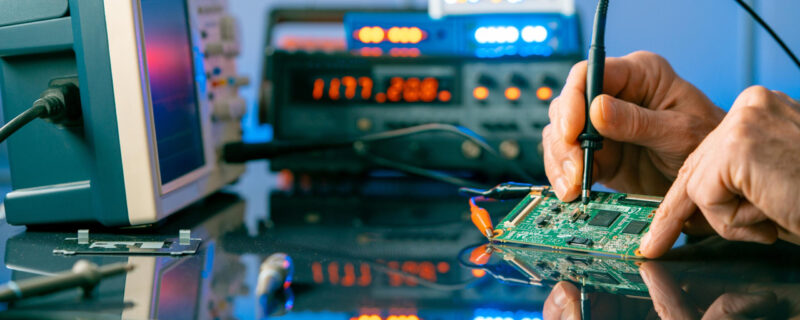
This site
is mobile
responsive
Malaysia is at the heart of Asia’s semiconductor footprint. The country’s strategic location and comprehensive infrastructure – including ports, airports, highways, logistics, and telecommunications – offer a competitive advantage in business costs. By establishing operations in Malaysia, investors will gain access to the global market of more than four billion people, through various free trade agreements (FTAs) signed with economic partners regionally and bilaterally.
The electrical and electronics (E&E) industry contributes significantly to Malaysia’s Gross Domestic Product (GDP) growth, investments, export earnings, and employment, as well as continuing to play a vital role in the country’s industrial development. For the past 50 years, the nation has strived to position its local marketplace as a destination for a holistic E&E ecosystem. This has enabled front-end and back-end semiconductor manufacturing operations and trade to commence at the highest level, leading many multinational companies (MNCs) to establish operations here. At the same time, local companies have not been far behind in joining the global value chain, with these firms persistently building efficiency, as well as providing products and services required by MNCs, both domestically and internationally.
E&E Industry Performance
In 2021, the E&E industry recorded investments worth RM148 billion, of which RM146.3 billion (98.8%) was from Foreign Direct Investment (FDI) while RM1.7 billion (1.1%) came from domestic investors. The approved investments are expected to create a total of 28,362 job opportunities in the industry.
From January to September 2022, a total of 83 E&E projects with investments of RM22.5 billion were approved, of which 31 were new projects with investments of RM2.0 billion, and 52 were expansion/diversification projects with investments worth RM20.5 billion. These projects are expected to generate more than 26,668 new jobs, including highly-skilled positions such as managerial roles, engineers, and technicians. Foreign entities accounted for the bulk of the total investments at RM21.3 billion (94.7%) while domestic investments amounted to RM1.2 billion (5.3%).
For the given period above, E&E products contributed 39.8% or RM57.41 billion towards Malaysia’s total exports, which amounted to RM144.31 billion. Under the Twelfth Malaysia Plan (12MP), the E&E industry is targeted to contribute RM120 billion to Malaysia’s GDP in 2025, compared to RM86.1 billion in 2020.
Still Scope for Growth
The domestic E&E industry is expected to continue maintaining its uptrend momentum, despite predictions that the industry’s demand has reached its highest point. Despite factors such as inflationary concerns, recession risk, and the impact of the China lockdown, global semiconductor sales were on the uptrend, although demand for consumer products – such as smartphones and personal computers – are moderating due to those earlier factors.
Up till early of this year, the biggest challenge facing the global semiconductor industry was shortages, mainly triggered by soaring demand in electronic consumer products. Unfortunately, chipmakers are now facing growing inventory and shrinking demand. The US-China trade tensions, where The US had taken another step towards hamstring its geopolitical rival with export bans, have caused some trepidation and could pose difficulties for some semiconductor global players and disrupt the global supply chain.
Growing importance in the digital world and autonomous vehicles will increase the demand for semiconductor and electronics products, thus global players are likely to continue to expand production capacities to meet the increasing clamour for semiconductor chips.
The Government is focused on accelerating the adoption and adaptation of advanced factory automation and digitalisation levels, to transition brick and mortar hubs into ‘intelligent factories’ to enhance flexibility and optimise productivity and growth.
The adoption of automation and Industry 4.0 (IR4.0) technology in the manufacturing process can reduce operating costs, eliminate its dependence on low-skilled foreign labour, eliminate human error, and reduce wastage. Automation can also significantly reduce employee turnover issues, particularly in the electronic manufacturing services (EMS) industry.
As mapped out in the National Investment Aspirations (NIA), there is more space to grow. Developing new clusters and innovation in existing areas will create highly-skilled jobs, expand regional and global supply chains, and increase efforts to bring socio-economic development.
The Government’s strong commitment towards advancing a green economy, business-friendly policies, and comprehensive measures aimed at solidifying bilateral cooperation with key industry partners will catalyse Malaysia’s value creation in advancing the nation’s competitiveness.
Sustainable investment in the E&E industry has started to receive greater recognition, as it favourably offers environmental gains, employee satisfaction, and helps society to progress. The rise in the importance of Environmental, Social, and Governance (ESG) standards comes as consumers grow more concerned about the environment and demand for products and services that align with what they believe is socially responsible. As such, local players must embrace more environmentally and ethically based approaches to remain competitive in today’s global supply chain.

The electronics components subsector is being driven by the expansion activities of international players into front-end manufacturing and also into more downstream investments in activities – such as assembly and test – by both foreign and domestic players. In the electrical products segment, the industry is seeing activities across the value chain, including LED epitaxial manufacturing, integrated solar cells and module production, and the production of domestic appliances.
On the contrary, there has been a considerable decrease in investment activities for the industrial and consumer electronics subsectors, with multiple international firms decreasing their share of production activities in Malaysia. This is due to cost pressures and global restructuring drives.
Semiconductor manufacturing is one of the largest manufacturing activities in Malaysia, and the key enabling technology for many applications including IoT, automotives, medical, industrial, transportation, aerospace, and energy applications. The ecosystem is predominantly controlled by MNCs who have a presence by growing Malaysian companies. As seen from the composition of companies across the semiconductor value chain in Malaysia, production in the country is mainly focused towards the downstream sector such as back-end manufacturing and systems integration. Moving forward, many MNCs in semiconductor operations have upgraded their facilities into integrated manufacturing centres that fuse their manufacturing activities with R&D, product Design and Development (D&D), marketing, and distribution activities. However, most local companies – particularly Small- and Medium-sized Enterprises (SMEs) – fare lower than larger corporations on technological advancement; as such, significant efforts are needed to modernise SMEs and bring them on par with the larger players in order to drive the industry further.
There are many ongoing initiatives undertaken by the Government in collaboration with the private sector and academia to enhance the contribution of the E&E industry towards regenerating economic growth and moving up the value chain under the 12MP and the upcoming New Industrial Master Plan (New IMP). These initiatives include reducing gaps between the talent produced and industry requirements; implementing internship or apprenticeship programmes by leveraging international standards and incentivising companies to participate; developing a structured programme for the continuous development and re-skilling of employees with the advent of new technologies; and building up the competency and presence of local players in joining the race to be integrated into the global value chain ecosystem.
